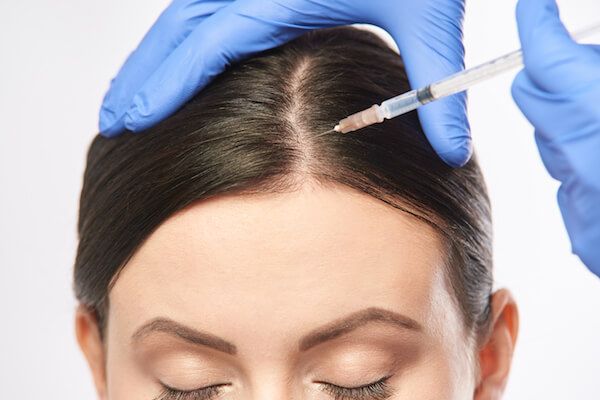Platelet-Rich Plasma (PRP) therapy is an innovative regenerative treatment that utilizes the body’s own healing components to rejuvenate tissues. It involves extracting a small amount of the patient's blood, processing it to concentrate the platelets, and then injecting this enriched plasma into targeted areas of the scalp.
PRP is packed with growth factors and proteins that play a key role in cell regeneration and tissue repair. These factors can awaken dormant hair follicles, prolong the growth phase of the hair cycle, and improve overall scalp health. PRP Hair Treatment in Dubai has gained immense popularity as a non-surgical and minimally invasive solution for individuals seeking to address hair thinning and genetic hair loss.
How PRP Works Against Genetic Hair Loss
PRP therapy works by leveraging the body’s natural healing process. When injected into the scalp, the platelets release growth factors that stimulate the stem cells in hair follicles. This can reverse the miniaturization process caused by DHT and enhance the blood supply to hair roots, thereby improving hair density and strength. In the case of genetic hair loss, PRP does not alter the genetic predisposition but helps slow down the progression and revitalize affected hair follicles. The therapy is especially effective in the early stages of androgenetic alopecia when there are still active, albeit weakened, hair follicles present.
Ideal Candidates for PRP Hair Treatment
PRP therapy is suitable for both men and women experiencing early to moderate stages of genetic hair loss. Candidates with thinning hair, receding hairlines, or patchy hair loss who have not completely lost the follicles are most likely to benefit from this treatment. Those with extensive baldness or scarring alopecia may not see the same level of improvement, as PRP relies on the presence of viable hair follicles to be effective. It is also essential that the individual maintains realistic expectations and understands that results vary depending on age, hair condition, and genetic factors.
The PRP Procedure: What to Expect
The PRP procedure typically involves three main steps: blood collection, plasma separation, and scalp injection. First, a small amount of blood is drawn from the patient. This blood is then spun in a centrifuge to separate the platelet-rich plasma from other components. Finally, the concentrated PRP is injected into specific areas of the scalp using fine needles. The treatment usually takes less than an hour and is well-tolerated by most individuals. Because the PRP is derived from the patient’s own blood, the risk of allergic reaction or rejection is minimal. For optimal results, multiple sessions are often recommended, spaced a few weeks apart, followed by maintenance treatments every few months.
Advantages of PRP for Genetic Hair Loss
One of the main advantages of PRP therapy is that it is a non-surgical, natural treatment with minimal downtime. Since the treatment uses your body’s own platelets, there’s no risk of disease transmission or major side effects. PRP also promotes overall scalp health, which is vital for hair regeneration. Unlike medications, it does not interfere with hormonal balances or require daily application, making it a low-maintenance option for many patients. The results are subtle yet progressive, offering a natural-looking improvement in hair density and texture.
PRP vs. Other Hair Loss Treatments
There are several other treatments for genetic hair loss, including topical minoxidil, oral finasteride, hair transplant surgery, and laser therapy. Each method has its own pros and cons. Topical and oral medications can be effective but may cause side effects or require lifelong use. Hair transplant surgery delivers permanent results but involves recovery time and surgical risks. Laser therapy is non-invasive but may require daily use and has variable effectiveness. PRP offers a middle ground — it is minimally invasive, safe, and uses the body’s own healing capabilities. When combined with other therapies, PRP can enhance results and extend the longevity of hair restoration outcomes.
Conclusion
Genetic hair loss can be distressing, but modern solutions like PRP therapy offer hope and confidence. It’s a scientifically backed, natural, and safe option that enhances hair growth and scalp health without significant risks or downtime. For individuals in the early to moderate stages of androgenetic alopecia, PRP can provide noticeable improvement and delay further hair loss.
